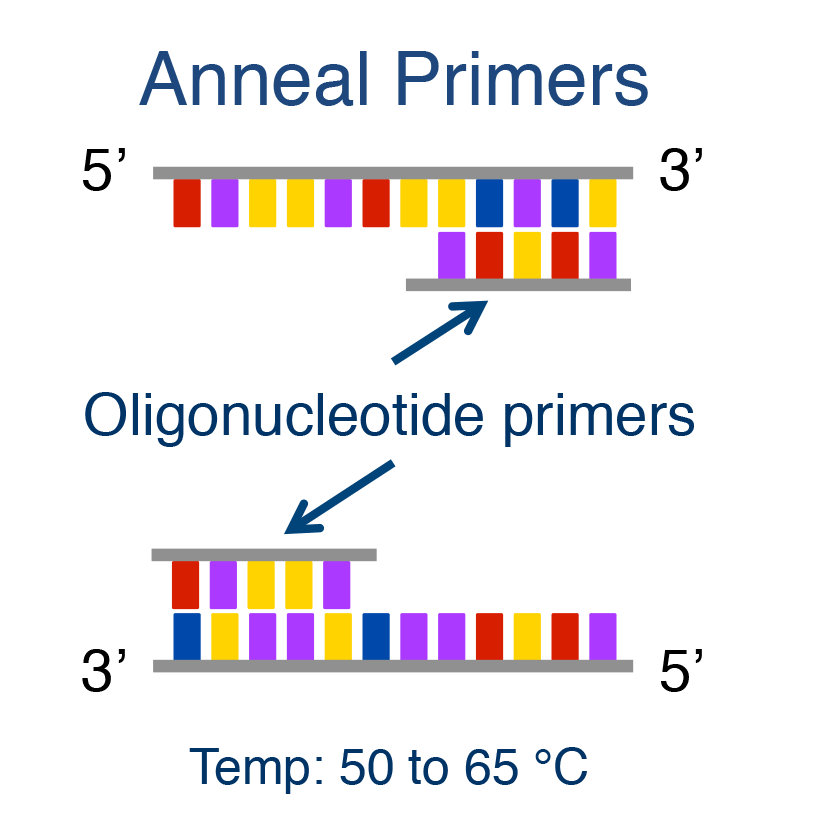
Adapted from Kendall and Riley (1999).
Steps in qPCR
- Denature DNA by heating
- Anneal primers to single strands of DNA
- Synthesize DNA
Anneal primers to DNA
After denaturation, the temperature is reduced to 50 to 60 ℃ to allow primers to bind to their complementary bases on the DNA template (Kendall and Riley, 1999). The selection of primers is important.
- Primers should bind to the DNA template with high specificity to maximize the PCR amplification.
- High primer concentrations can result in hybridization to non-complementary sequences with mismatches.
- Low primer specificity can result in:
- Amplification of unwanted products and primer dimers.
- qPCR results may be affected if using a fluorescent dye that binds to double-stranded DNA.